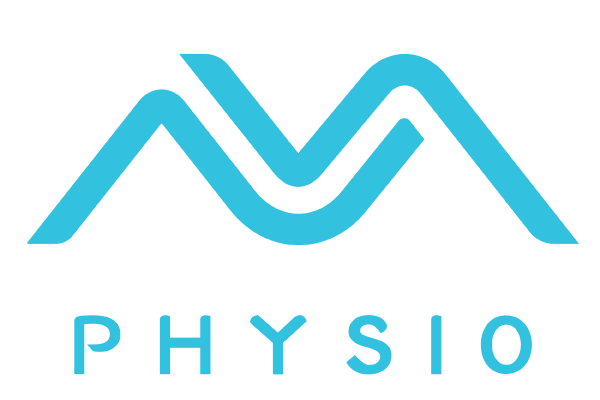Are you or someone you know recovering from an injury, illness, or surgery? Physiotherapy is an effective treatment option that can help manage movement, reduce pain, and improve physical function. In this guide, we will provide you with a comprehensive overview of how physiotherapist care to help patients recover their health.
Learn how physiotherapists manage patient care to help them recover their health with this ultimate guide, which covers the following key points: – The role of physiotherapists in patient care, including assessment, diagnosis, and treatment planning – Techniques and tools used by physiotherapists to help patients recover, such as exercise therapy, manual therapy, and electrotherapy – How physiotherapists work with other healthcare professionals to provide comprehensive care for patients
What is Physiotherapy?
Physiotherapy, also known as physical therapy, is a non-invasive treatment that involves a variety of techniques, including manual therapy, exercise therapy, and electrotherapy. These techniques are designed to reduce pain, improve joint mobility, and promote healing. Physiotherapy can be used to treat a wide range of conditions, including:
- Sports injuries
- Back and neck pain
- Arthritis
- Stroke
- Parkinson’s disease
- Multiple sclerosis
- Chronic obstructive pulmonary disease (COPD)
How to Find a Suitable Physiotherapist
Finding a suitable physiotherapist is an important step in the recovery process. To find a physiotherapist, individuals can start by asking their primary care physician for a referral. It is also important to consider the physiotherapist’s specialty and experience in treating the specific condition or injury. Patients should make sure that their insurance covers the services provided by the physiotherapist they choose.
Patient Assessment and Goal Setting
Before starting any treatment, physiotherapists perform a thorough assessment of the patient’s condition to determine the best course of action. The assessment may include a physical examination, medical history, and diagnostic tests such as X-rays or MRI scans. Once the assessment is complete, the physiotherapist care will work with the patient to set goals for their recovery. The goals may include reducing pain, improving strength and flexibility, and increasing range of motion. The physiotherapist care will also develop a treatment plan tailored to the patient’s specific needs and goals.
Treatment Techniques
Physiotherapist care use a variety of treatment techniques to help patients recover from injuries and improve their physical function, including:
Manual Therapy
Manual therapy involves hands-on techniques such as massage, mobilization, and manipulation to help reduce pain, improve joint mobility, and promote healing.
Exercise Therapy
Exercise therapy involves specific exercises to help improve strength, flexibility, and balance. These exercises may include stretching, resistance training, and cardiovascular training.
Electrotherapy
Electrotherapy involves the use of electrical stimulation to help reduce pain and improve muscle function. This technique may include transcutaneous electrical nerve stimulation (TENS) and neuromuscular electrical stimulation (NMES).
Other Techniques
Other techniques that physiotherapists may use include heat therapy, cold therapy, and ultrasound therapy.
Importance of Follow-Up Care
Follow-up care is an important part of the recovery process. It allows the physiotherapist care to monitor the patient’s progress and make any necessary adjustments to the treatment plan. Follow-up care may include regular appointments with the physiotherapist care, as well as exercises and self-care instructions to be performed at home.
Pros and Cons of Physiotherapist care
| Technique | Description | Benefits |
|---|---|---|
| Manual Therapy | Hands-on techniques such as massage, mobilization, and manipulation to promote healing and improve joint mobility. | Reduces pain, improves joint mobility, and promotes healing. |
| Exercise Therapy | Specific exercises to improve strength, flexibility, and balance, including stretching, resistance training, and cardiovascular training. | Improves strength, flexibility, and balance. |
| Electrotherapy | Use of electrical stimulation to reduce pain and improve muscle function, including TENS and NMES. | Reduces pain and improves muscle function. |
| Heat Therapy | Use of heat to improve blood flow, relax muscles, and reduce pain. | Improves blood flow, relaxes muscles, and reduces pain. |
| Cold Therapy | Use of cold to reduce inflammation and pain. | Reduces inflammation and pain. |
| Ultrasound Therapy | Use of high-frequency sound waves to promote healing and reduce pain. | Promotes healing and reduces pain. |
Pros
- Provides a non-invasive treatment option for individuals recovering from injuries, illnesses, or surgeries.
- Helps manage movement and reduce pain in individuals with various conditions.
- Improves physical function, range of movement, and quality of life while also preventing further injury or disability.
Cons
- Requires a significant time commitment.
- Can be costly, especially if insurance doesn’t fully cover the services.
- May have potential side effects such as discomfort or soreness during or after a treatment session.
FAQ
Conclusion
Physiotherapy is an effective treatment option that can improve physical function, range of movement, and quality of life for individuals recovering from injuries, illnesses, or surgeries. Finding a suitable physiotherapist, undergoing a thorough assessment, and setting goals for recovery are all important steps in the recovery process. Follow-up care is crucial to ensure continued progress and improvement. If you or someone you know is in need of physiotherapy, we encourage you to seek out a qualified physiotherapist and take the first step towards recovery.
What is the difference between physiotherapy and physical therapy?
There is no difference between physiotherapy and physical therapy. They both refer to the same type of treatment that helps manage movement and reduce pain in individuals with various conditions.
How long does physiotherapy take?
The length of time required for physiotherapy treatment varies depending on the individual’s condition and the severity of the injury or illness. A physiotherapist care can provide an estimate of the length of time required for treatment based on the patient’s specific needs and goals.
Is physiotherapy painful?
Physiotherapy treatments should not be painful, but patients may experience discomfort or soreness during or after a treatment session.
Insider Tips:
“When looking for a physiotherapist, don’t be afraid to ask questions about their experience and specialty. It’s important to find someone who has experience treating your specific condition or injury.”

